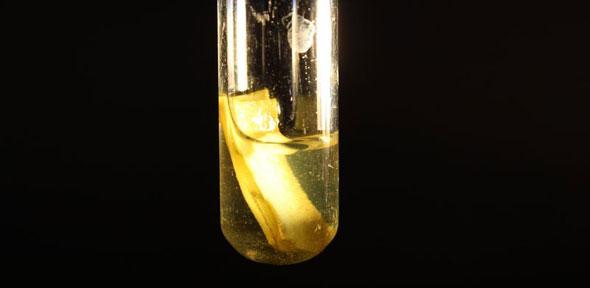The technique – which uses a photocatalytic conversion process to convert plant material into gaseous hydrogen – could ultimately lead to the development of industrial-scale facilities for producing the increasingly important fuel.

The main component of plant biomass is Lignocellulose but according to the team up until now its conversion into hydrogen has only been achieved through a gasification process which uses high temperatures to decompose it fully.
Dr Moritz Kuehnel, joint lead author of a paper on the project published in Nature Energy, said that the new technique overcomes many of the challenges of traditional processes. "Lignocellulose is nature's equivalent to armoured concrete. It consists of strong, highly crystalline cellulose fibres, that are interwoven with lignin and hemicellulose which act as a glue. This rigid structure has evolved to give plants and trees mechanical stability and protect them from degradation, and makes chemical utilisation of lignocellulose so challenging."
During the process catalytic nanoparticles are added to alkaline water in which the biomass is suspended. This is then placed in front of a light in the lab which mimics solar light. The solution is ideal for absorbing this light and converting the biomass into gaseous hydrogen which can then be collected from the headspace.
The technology was developed in the Christian Doppler Laboratory for Sustainable SynGas Chemistry at the University of Cambridge. Commenting on the research the head of the laboratory, Dr. Erwin Reisner said: “Our….technology is exciting as it enables the production of clean hydrogen from unprocessed biomass under ambient conditions. We see it as a new and viable alternative to high temperature gasification and other renewable means of hydrogen production. Future development can be envisioned at any scale, from small scale devices for off-grid applications to industrial-scale plants, and we are currently exploring a range of potential commercial options."
According to the group talks are now under way with a potential commercial partner.











Comment: The UK is closer to deindustrialisation than reindustrialisation
"..have been years in the making" and are embedded in the actors - thus making it difficult for UK industry to move on and develop and apply...